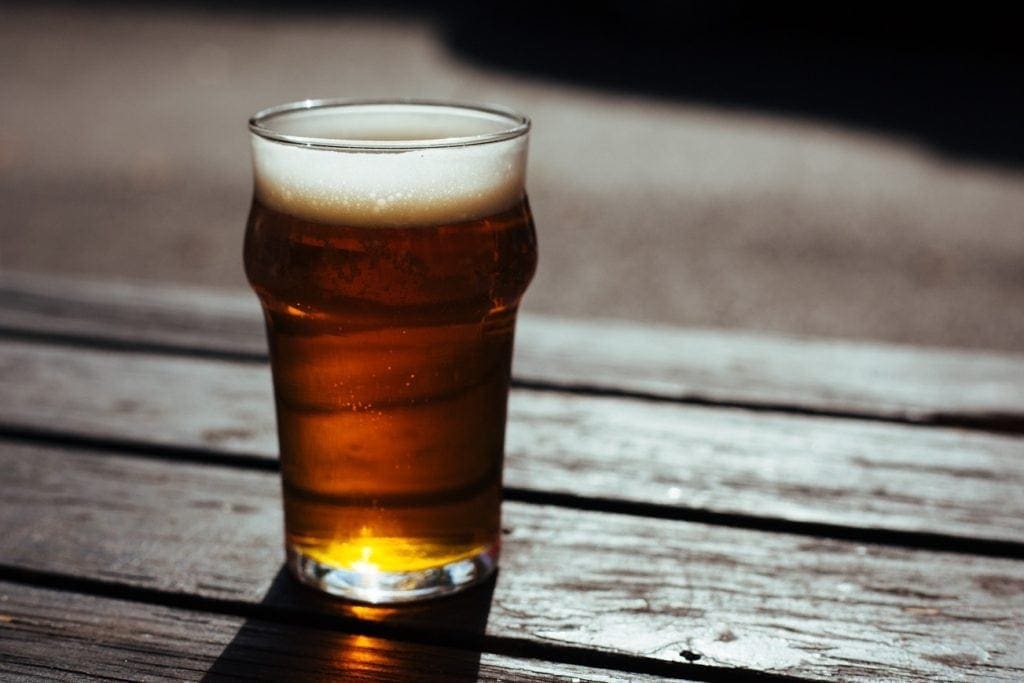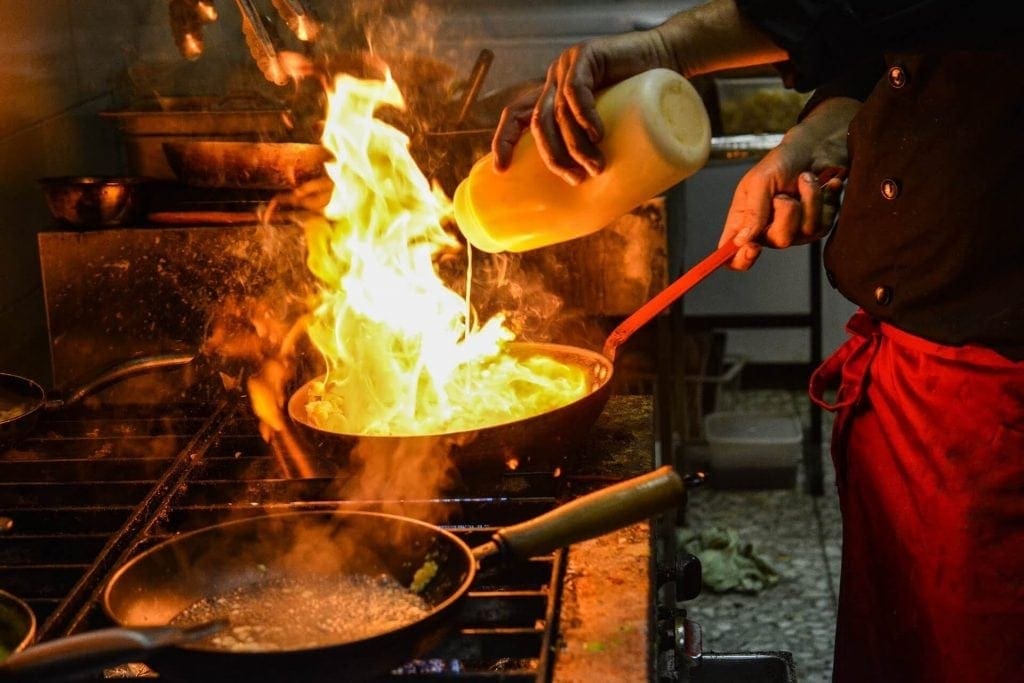Tips on Moving to the Pacific Northwest
For those that don’t know what defines the Pacific Northwest, Wikipedia says that while there is no agreed-upon boundary, the common conception is that it includes the states of Oregon and Washington. When one thinks about these two states, images start coming to mind, mostly developed through seeing “Portlandia” or Sleepless in Seattle.” If you’ve recently contemplated a relocation this neck of the woods, you are not alone. People are flocking to the area in droves. But before you pack all your belongings into a U-Haul and start heading this way, you may want to consider some of the pros and cons to living in the Pacific Northwest.
PROS:
 Will you have Beer, Coffee or Wine?
Will you have Beer, Coffee or Wine?
Outside of the rain, when one thinks about the Pacific Northwest, they picture a frosty IPA, or a frothing mug of coffee. Notwithstanding Starbucks, Seattle ranks number four in coffee shops per capita in the U.S. with 278 (Berkeley, CA is number 1.) Portland is right behind it with 246, according to study by Apartment Guide.
Another not-so-hidden secret is the beer scene. Portland is front and center of this movement. SmartAsset has ranked Portland #1 in their annual “Best Cities for Beer Drinkers” survey. Makes sense. With 67 breweries in the Portland metro area, you can hardly turn a corner without running into a keg. Portland even features BrewCycle, where groups hop on a 15-person moving party machine and pedal their way from brewpub to brewpub. Seattle isn’t too far behind, ranking 8th in the same survey.
Don’t get us started on the wine scene. If beer and coffee aren’t your things, surely wine is. Washington is home to 940+ wineries, while Oregon is fast approaching with over 725. A day spent wine tasting is a day you’ll never forget.
 The Foodie Scene
The Foodie Scene
The secret has probably gotten out by now that the Pacific Northwest is a food lover’s paradise. For several years now, both Seattle and Portland have been ranked in the top 10 for cities with the best food scene by various publications. In fact, in 2015, the Washington Post ranked Portland as the number 1 food city in America. With the ability to source fresh seafood, a long growing season to cultivate a plethora of fruits and vegetables, and thousands of acres of grazing lands, Washington and Oregon’s restauranteurs essentially invented the term “locally-sourced.”
Portland offers the extremes in dining, from haute cuisine served at Ripe Cooperative and Le Pigeon to the roughly 700 food carts serving restaurant quality food for cheap, tourists are flocking to the city for their digestive explorations. Portland now has its own nationally-renowned food festival called Feast Portland. This 4-day event takes place in venues all over downtown Portland and features celebrity chefs, dozens of distillers and brewers, and 10,000 of your closest friends.
Seattle’s restaurant scene has gone international, with food from every corner of the earth. In fact, there are more teriyaki and pho restaurants in Seattle than any place outside Asia. Right behind it are the many Jalisco-style Mexican restaurants. Some hot new restaurants in the area include Cafe Juanita, Nells, and Mamnoon.
Varied Topography
For those coming from “flyover land” — meaning the Midwest, where the most exciting topographical element is a silo, you’re in for a treat. The Pacific Northwest has 8 climate zones from the oceanic climate of the coastal areas to the semi-arid and arid climates of the eastern parts of each state. There’s even a subarctic climate in the mix if you include parts of Northern British Columbia. All this adds up to a wealth of choices when it comes to deciding what type of climate you want to live in.
Open Spaces
If you like a little room to breathe, the Pacific Northwest may be the place for you. Oregon ranks 39th in population density with 42 people per square mile, and Washington ranks 24th with 108 people/sq. mile. Compare this to New Jersey, which as 1210 people per square mile and you start to get the idea that if it’s space you need, the Pacific Northwest has it in spades. If you’re into hiking, check out this great book on on the Best Hikes in the Pacific Northwest.
Catch-All
If we listed all the great things about living in the Pacific Northwest, you’d think we were working for the Tourist Council. But a few more won’t hurt.
High Minimum Wage
Both Oregon and Washington have some of the highest minimum wage rates in the country. Oregon is currently at $10.75/hour with a new law that will see this rise to $14.75 for metro low-wage workers by 2022. Washington’s rate is currently $12.00/hour with a new law passed that will see that wage go up to $13.50 by 2020.
BigFoot
Washington is the de facto capital of Bigfoot mania. According to the Bigfoot Field Researchers Organization, Washington has had 657 reported sightings of Sasquatch, while Oregon has had 250. The benefits of this are the great t-shirts, replica footprints and blurry photo reprints you can buy at the multitude of bigfoot tourist stops.
Just Say No to Taxes
You may also know that Washington does not have a state income tax, but they do have a sales tax, while Oregon is the reverse – no sales tax, but quite a hefty state income tax.
CONS:
With so many reasons to move to the area, it’s a shame we have to list the downsides of life in the Pacific Northwest.
Rain
Rain is invariably the first thing people mention when you bring up moving to the Pacific Northwest. “Oh, how are you going to deal with all that rain?” is a frequent statement. Seattle actually set a record in 2016 year for the most rainfall between October and April since records began in 1895. Portland set a record of its own with 145 days of rain during the same period. For those doing the math, that means only 66 days didn’t have rain. But it is now time to debunk some myths about the rain. Oregon and Washington both rank in the bottom third of states with the most annual rainfall. Coincidentally, Hawaii, a state that many believe to be a perfect paradise, gets the most annual rainfall. Both Portland and Seattle are above the national average, but far from being close to the top.
The key to living in the rain is embracing it. Get yourself a couple of good waterproof jackets that will allow you to spend hours in the rain. Also, invest in a pair of Gore-Tex hiking boots. The Pacific Northwest is well known for its magnificent natural beauty. Endless trails exist in the Cascade Mountain range, and gorgeous sites such as Multnomah Falls, Mt. Rainier and Mt. Hood need to be taken advantage of on a regular basis.
Trade One Fear for Another
If you’re coming from the East, Midwest or South, you’ve learned to live with storms that produce lightning and tornadoes. You’ve probably ended up in the basement waiting out the storm on more occasions that you can count.
If you move to the PN, we’ve got good news for you. We rarely get tornadoes or lightning. When we do get lightning, it feels kind of quaint. You can hear people in coffee shops saying, “did you see the lightning last night? Wasn’t it great?”
Now for the trade. Instead of tornadoes and lightning, as a Pacific Northwesterner, you get to worry about the ever-looming massive earthquake that is predicted to hit the area in the next 50 years. And with that will come a ginormous tsunami that will devastate much of the Oregon & Washington coastline. While experts have predicted with this with much certainty, no one knows when this will happen, so as long as you have your week’s worth of water and rations, and maybe a bugout bag, you don’t have to think about it too hard.
And did we mention the volcanoes? While everyone has heard of Mt. St. Helens (which is still very active), most don’t know that both Mt. Rainier near Seattle and Mt. Hood near Portland are also volcanoes. They are among 14 volcanoes encompassing the Cascade Volcanic Arc, an area extending from southwest British Columbia through Washington and Oregon to Northern California. Outside of Mt. St. Helens, which last erupted in 2008, it’s been over 100 years since any of these has erupted. But the threat is still there.
Cost of Living
![]() Did you think all this merriment and beauty was free? No, it comes with a cost, and that is the cost of living, which is unfortunately high and getting higher. According to Expatistan, Seattle had the 20th highest cost of living in the U.S. in 2019, whereas Portland was 32nd. According to rentjungle.com, the average rent for a two-bedroom apartment in Seattle is $2,081. That is nearly 47% higher than the national average. The average two-bedroom apartment in Portland was $1614 a 14% increase over the national average.
Did you think all this merriment and beauty was free? No, it comes with a cost, and that is the cost of living, which is unfortunately high and getting higher. According to Expatistan, Seattle had the 20th highest cost of living in the U.S. in 2019, whereas Portland was 32nd. According to rentjungle.com, the average rent for a two-bedroom apartment in Seattle is $2,081. That is nearly 47% higher than the national average. The average two-bedroom apartment in Portland was $1614 a 14% increase over the national average.
If you’re thinking of buying, the median home price in Seattle is $874,843. Portland’s median home price is somewhat lower at $574,291. This compares to a national median home price of $408,100, so both cities are well above the national average. NeighborWho.com just published their City Guide to Living in Portland and Its Neighborhoods, which offers insights into the city’s neighborhoods, schools, weather, crime, and other details.
All in all, the Pacific Northwest is still a fantastic place to live, work, raise a family, and enjoy the bounty of natural beauty that it offers. It’s most decidedly not “fly-over land.”
Editor’s Note: This article was originally published in November 2016 and was updated in April 2022 for accuracy.

About the Author: Derek Hines
Digital Marketing Specialist
Derek is originally from the great state of Wisconsin (go Badgers), but is slowly becoming a Pacific Northwesterner. As part of the Digital Marketing team, he writes extensively on storage, moving and life for West Coast Self-Storage, based in Everett, Washington.
